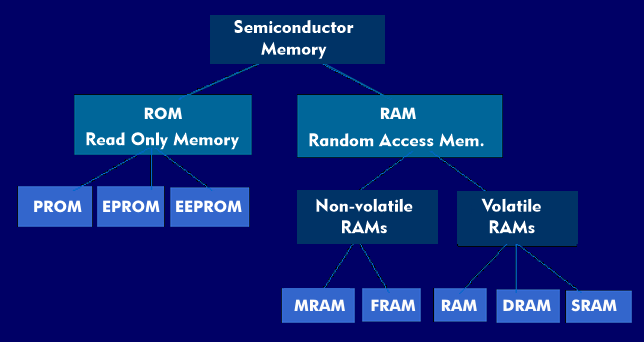programmable read only memory (PROM)
A Programmable Read Only Memory (PROM) is a programmable semiconductor memory that can be programmed once by the user and only read out. It is a Programmable Logic Array( PLA) of a Non-Volatile Memory( NVM), i.e. a non-volatile memory that retains its stored contents even after the supply voltage is switched off. PROMs consist of OR gates joined together to form an array.
In addition to memory elements, PROMs have electronic circuitry that enables bit-by-bit programming. They are used for permanent storage of programs. PROMs can be programmed once as One Time Programmables( OTP) or they are Field Programmable.
The basic architecture of PROMs consists of an input decoder of AND gates and an output matrix of OR gates that are combined together. This allows each output to be individually linked to any possible input. The individual links are created by merging the connections. The classic field-programmable PROM has been further developed into the erasable PROM, the Erasable PROM( EPROM), which can be erased with UV light. In addition, there is the Electrically Erasable PROM( EEPROM), which can be erased with a voltage. The programmable semiconductor memories are used in game consoles, RFID tags, electronic measuring devices and medical devices in interfaces as well as in consumer electronics and automotive technology.
Since the PROM architecture reaches its limits when many inputs are linked to many outputs, the PLD architecture, Programmable Logic Device (PLD), provides a more flexible concept.

